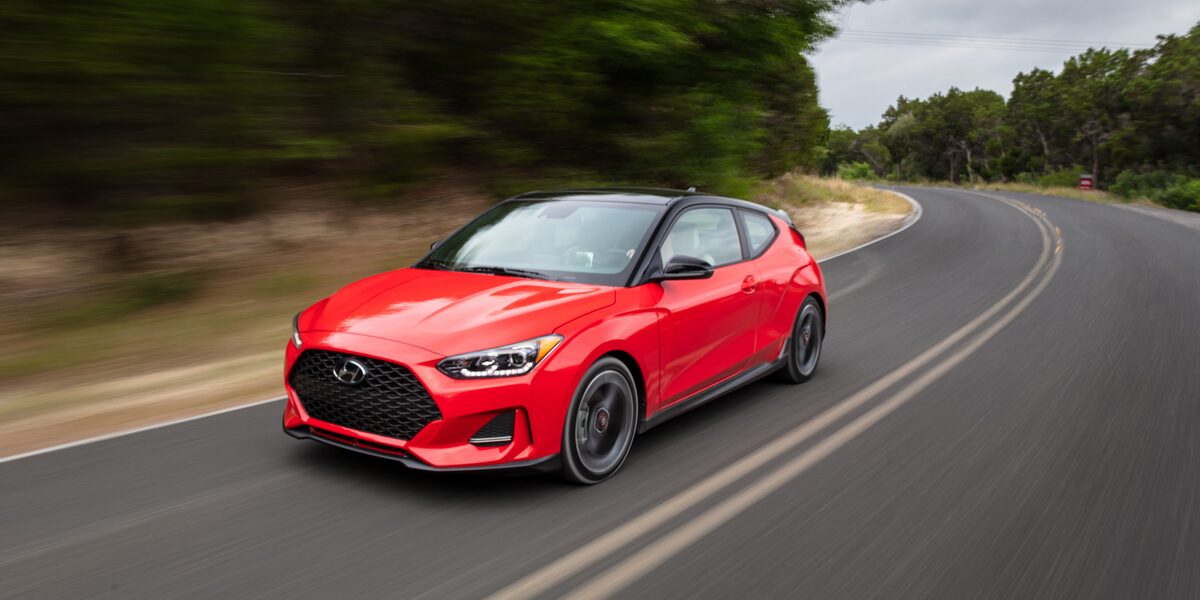
Everything You Want to Know about Hyundai's Sporty Coupe
Hyundai has come a long way as a brand. Once known for building cheap, slow, but dependable entry-level cars, the South Korean company is gaining traction worldwide recently, and increasingly with automotive enthusiasts. Vehicles like the quirky Veloster are a big reason Hyundai is on everyone's radar in 2020. Nowadays, Hyundai vehicles are dependable, very well designed, and less expensive than you would think. And, the Veloster being a rare combination of performance, practicality, and value, it's an interesting choice if you are looking for a cheap but fun-to-drive sports car.
Origin of the Veloster
Following MY 2008, Hyundai brought an end to the production of the Tiburon. The void left by its absence in Hyundai's lineup eventually made room for the introduction of another more modern sports coupe.
The Veloster was first revealed at the Seoul Motor Show in 2007. Codenamed HND-3 Concept, the odd design immediately caught the attention of the automotive press. Unlike virtually every vehicle on the road, the Veloster concept has three doors; a large door on the driver's side and two smaller doors on the passenger side. This bizarre configuration surprisingly made it into production with the first Veloster vehicles going on sale in the US at the end of 2011.
There are many theories about the origin of the name of the vehicle. But in all likelihood, "Veloster" might come from the combination of the Latin word velox, for speed, and the prefix -ster, typically used to indicate that someone or something is good at a particular thing. It was even popular slang once to add the prefix -ster to someone's name. The Veloster being a car appealing mostly to young drivers, it's doubtful that many of the potential buyers may even remember the use of that slang, though.
Find a repair manual for your Hyundai Veloster here!
Hyundai Veloster Features
One more interesting note on the asymmetrical doors; Hyundai builds cars for both right-hand and left-hand drive markets. Consequently, Veloster vehicles are built entirely differently to allow the smaller, passenger doors to remain on the passenger side of the car for the respective market.
The basic body of the vehicle is shared across all three model ranges. It is a compact coupe design with a liftgate rear hatch. It could be described as a compact crossover hatchback, or even as a shorter shooting brake design. The front end features a wide, mesh-like grille, which is more pronounced on the second-gen. All models are front-wheel drive and have a transverse front-mounted 4-cylinder engine.
Front seats are comfortable considering the smaller dimensions of the vehicle, while the rear seat is best used for kids, pets, or groceries. A short trip in the back might be sufficient for most adults, but longer trips are going to be quite unpleasant.
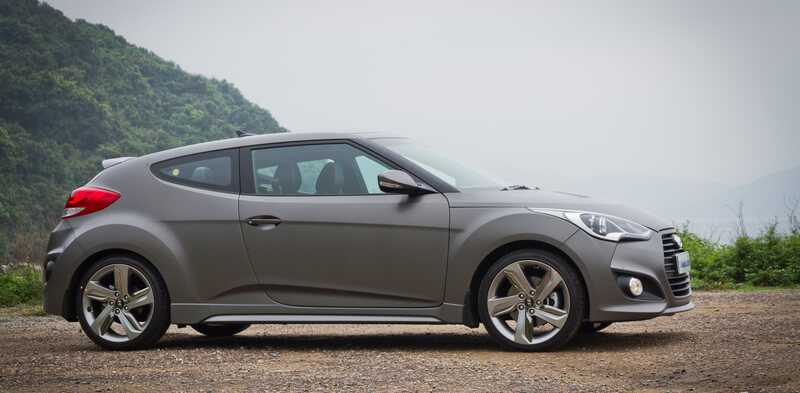 2013 Hyundai Veloster - First-Generation
2013 Hyundai Veloster - First-GenerationVeloster Models
Hyundai sells two variants of the Veloster in all markets. The Base variant is the most affordable, with 2020 models at an MSRP of $18,800. The Turbo adds performance but increases costs. In the base trim, cloth seats and a 7" touchscreen infotainment center are the norms. The first generation (MY 2012-18) base engine is a 1.6l four-pot producing around 140 horsepower. Unlike Hyundai cars of generations past, the base Veloster isn't exactly slow, but it really isn't meant for speed either. It'll hit 62 mph from a stop in 10-11 seconds. Transmission options for the first-gen include a six-speed manual and a six-speed automatic.
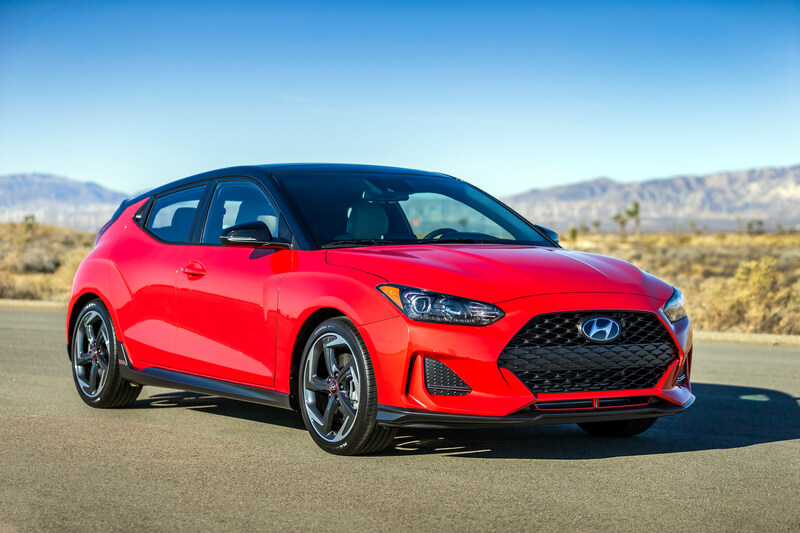
[gallery columns="5" ids="2819,2820,2821,2823,2824"]
Veloster Turbo
The Veloster did well in its first year selling in the States. As a result, Hyundai brought the Veloster Turbo over for 2013. For drivers that really want the performance to match the look of the car, the turbo variant is the only way to go. Suddenly, the power output went from a paltry 140 hp to a respectable 201 hp, good enough to bring the 0-60 time down between seven and eight seconds, depending on the transmission.
The Veloster was finally really fun to drive. The added power is particularly noticeable on twisty mountain roads, where the finely tuned suspension gets to play. Tight, grippy steering and torque that peaks at 1,500 rpm makes leaping out of corners thoroughly enjoyable.
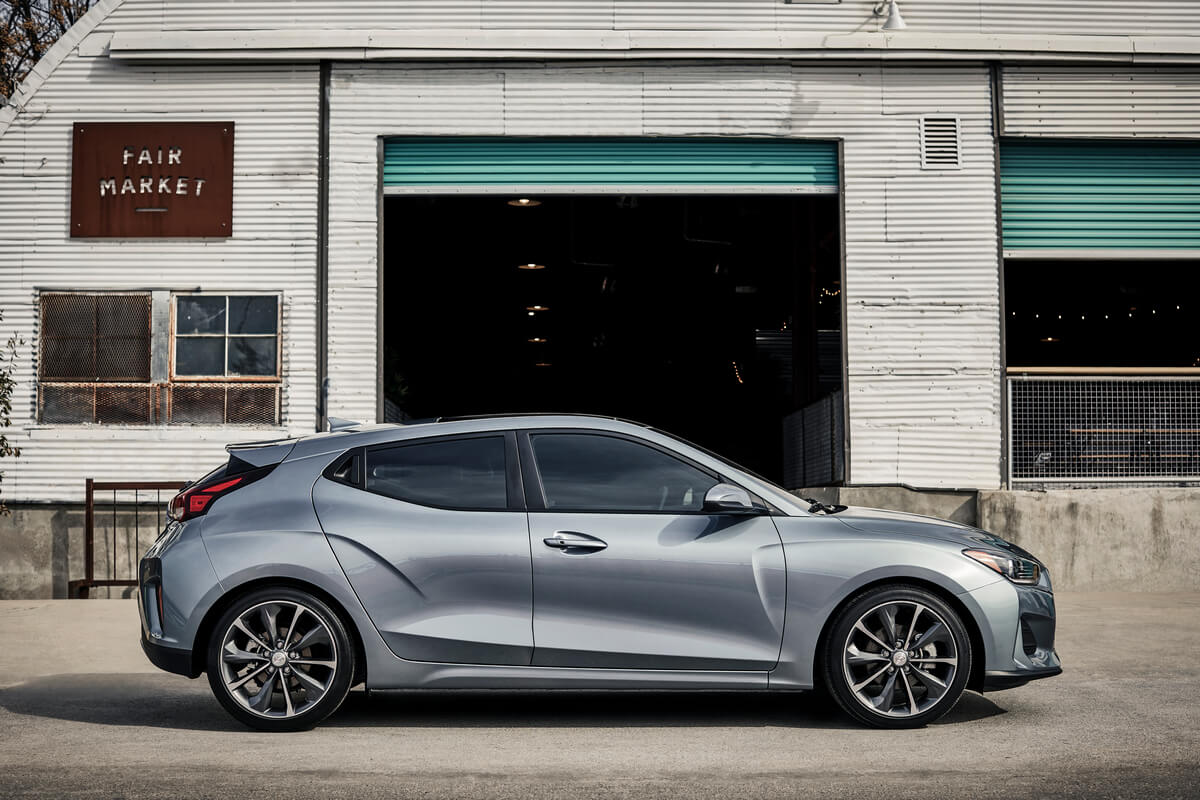
Veloster second-generation (2018-present)
Vehicles that stay eight years in the US market without a significant redesign are quite rare. Buyers just crave something new, and an abundance of similar-looking used cars is hard on the new car market. When the newly-redesigned Veloster was introduced in 2019, it was high time. Not because the styling had gotten stale; in fact, the first-gen cars still look pretty modern, but the available technology simply has outgrown the sporty coupe.
All models now come with a full bevy of safety features like front collision avoidance and emergency braking. The suspension changes that made the turbo model so much fun to drive are now standard across the range. While the base model is up on horsepower only just slightly, better transmissions and injection technology allow the somewhat heavier car to accelerate quicker than first-gen base models. Sub-10 second 0-60 times are plenty respectable for an inexpensive commuter car.
Turbo models also saw upgrades for MY 2019. Joining the Turbo, Hyundai introduced a Turbo R-Spec and the Turbo Ultimate. R-Spec cars receive unique body panels and interior trim. The Turbo Ultimate package includes every option Hyundai could find, including a heads-up display, adaptive cruise control, leather seating, and a push-button starter.
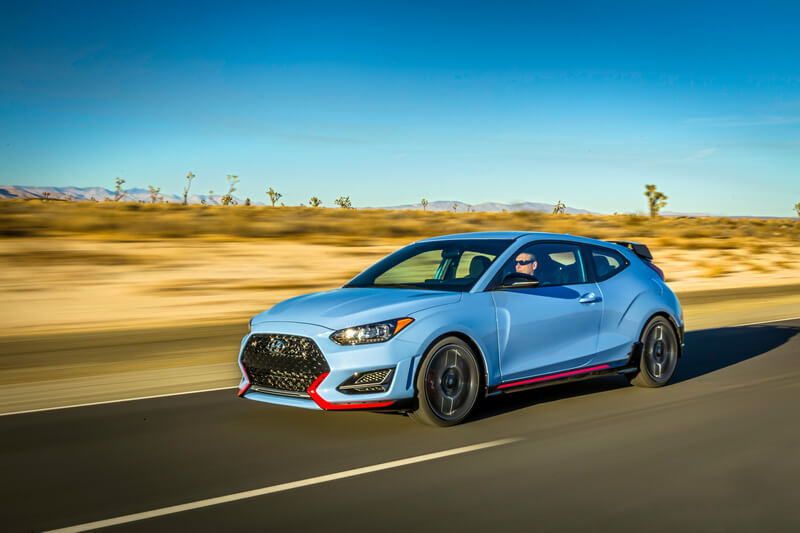
[gallery columns="6" ids="2812,2813,2814,2811,2815,2816"]
Veloster Turbo N
Buyers looking for a track-ready car they can still drive around town now have the Hyundai Veloster Turbo N available. With two distinct variants, the Turbo N brings power levels up to V8 territory. The base package provides 250 hp, while the performance package increases it up to 275 hp. The suspension is tuned for cornering, so expect to have a significantly rougher ride. It's also a louder experience due to reduced sound-absorbing materials to cut weight. With a starting MSRP of $28,000, the Veloster N is still an affordable sporty car.
Is the Hyundai Veloster a Good Car to Buy?
Car buying is a challenging process. Many cars that we love the look of, we hate driving. Others are so much fun to drive; it doesn't matter what it looks like. But, getting a car somewhere in between isn't easy. The Hyundai Veloster really meets this rare category. Why? Because of the combination of aggressive styling, robust build quality, and a range of factory options that don't suck. Both the first- and second-generation models are reliable and relatively efficient. The average mileage ranges from 28-35 miles per gallon, depending on model options and driving style.
And even better, RepairPal.com says the average annual maintenance cost is $493, which makes it cheaper to upkeep than most similar cars.
Buyers of the Hyundai Veloster have been largely happy with the car. Few owners report serious issues, and Hyundai only recalled a small number of cars in 2012.
Features that Matter Most
When you are looking to buy a Hyundai Veloster, there are a few options that are worth the money. First and foremost, look for one of the turbo models. They are simply more fun to drive, and it's worth spending a little more on a car that you won't be scared to pass someone on the freeway in.
Look for models featuring the 8" touchscreen that is Apple CarPlay and Android Auto-ready. These AI systems are going to be revolutionary as time goes on. Already, we see the integration of smart devices in the home with those in the car, making sense to start with this technology. An infotainment upgrade to gain AI options through aftermarket equipment can cost more than $2,000.
Second-generation cars have better-tuned suspension components. The first-gen cars used a primitive rear suspension that works fine but is not nearly as responsive or controllable as the Turbo or 2nd-gen cars.
Is the Hyundai Veloster Easy to Work On?
All of the engines Hyundai uses to power the Veloster are very reliable and will happily give many years of dependable service. But, the only way to keep that reliable engine in good shape is to keep the vehicle well-maintained. Hyundai offers a free, three-year, or 30,000-mile service warranty, along with a bumper-to-bumper parts warranty for 100,000 miles.
That's enough to keep most people from having to get dirty. The good news is that when warranty coverage expires (or you don't live near a service center), making repairs to the Hyundai Veloster is relatively straightforward.
And, when in doubt, getting your hands on a repair manual for your Veloster will help you follow the manufacturer's recommended service intervals and maintain it yourself for a fraction of the cost.
In Brief...
Buyers looking for a reliable and efficient car that is also fun to drive and big enough to take the dog to the beach will love the compactness of the Veloster. It's an easy to live with car that looks good and performs when it needs to do so. Turbo models continue to build on the performance pedigree Hyundai is striving for, and the new N-models are proving to be competent race cars. An electric version may be on the horizon, as Hyundai introduced a Veloster Turbo N electric to compete in the new ECTR class.
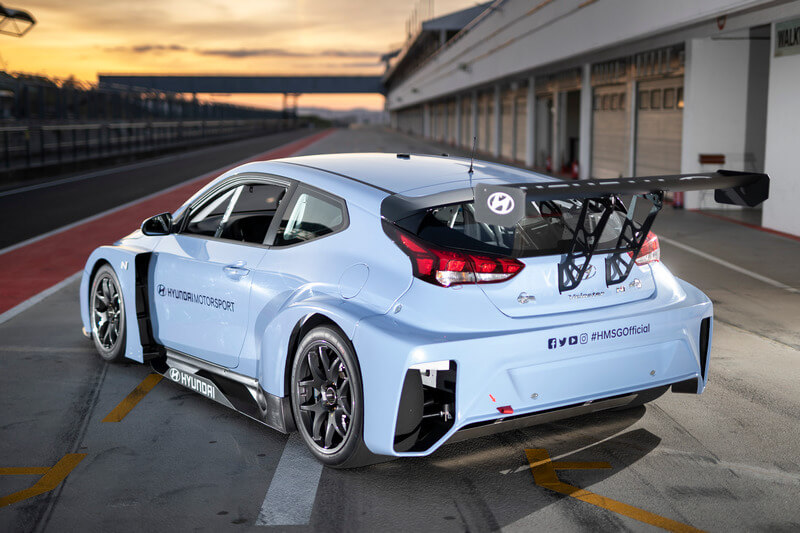 Hyundai Motorsport Begins Testing with Veloster N ETCR
Hyundai Motorsport Begins Testing with Veloster N ETCR